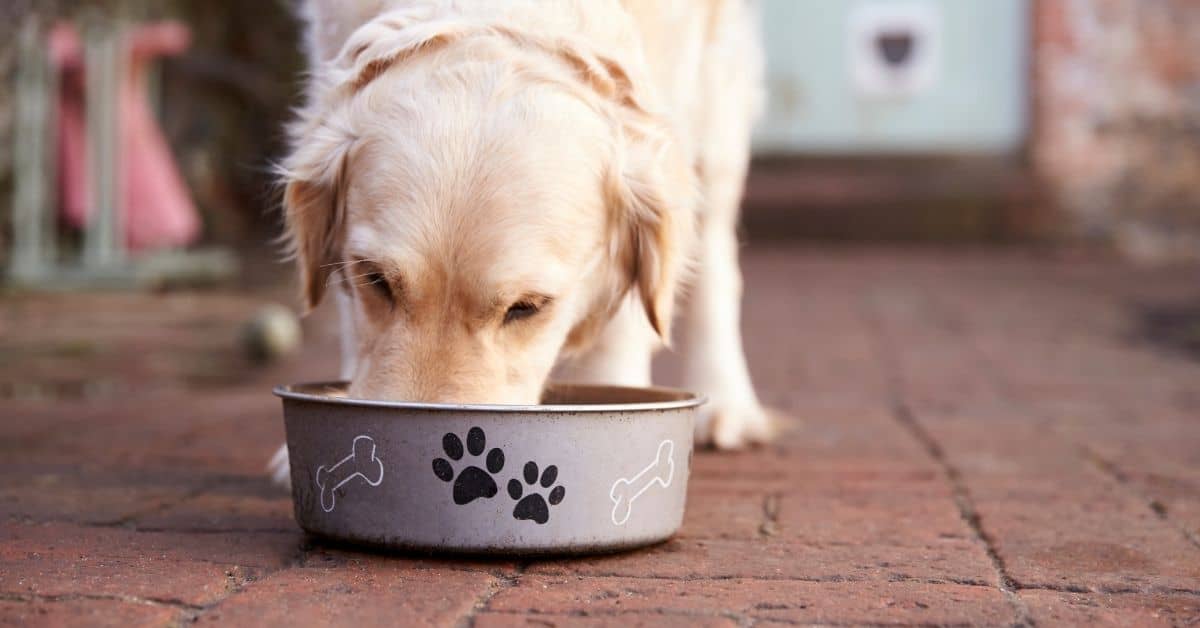Most dogs are excited when they see you eating something.
They make you want to immediately give them some of your food when they open those super adorable puppy eyes.
You should exercise caution in that regard because a lot of things we eat are highly toxic when eaten by a dog.
Dogs have a different metabolism from humans and a voracious appetite.
As a result, some foods that are very healthy for us can be bad when our dog eats them.
Dogs also don’t know when to stop eating, which allows them to consume toxic foods in large quantities.
This article will discuss 25 foods that can kill dogs, if consumed in large quantities.
Avoid feeding those dangerous foods to your dog, because they are highly toxic and your four-legged friend will have serious health problems.
Alcohol
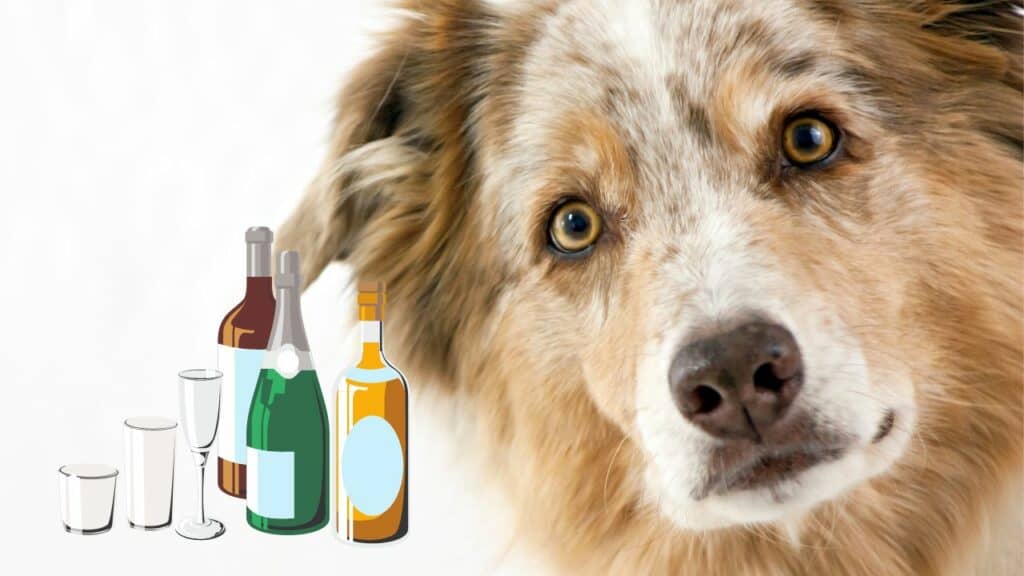
Of course, you wouldn’t intentionally allow your dog to get wasted.
We are not considering that.
However, alcohol can also be found in many other goods, including mouthwash, cleaning supplies, and perfumes.
So don’t let them near your dog.
For them, even a tiny amount of alcohol can be fatal and dogs get alcohol poisoning.
The main symptoms of alcohol poisoning in dogs are vomiting, labored breathing, and poor motor control.
According to experts, eight millimeters of pure alcohol per kilogram can result in death in 12 to 24 hours.
So alcohol is a serious business and it’s highly poisonous to dogs.
Avocados
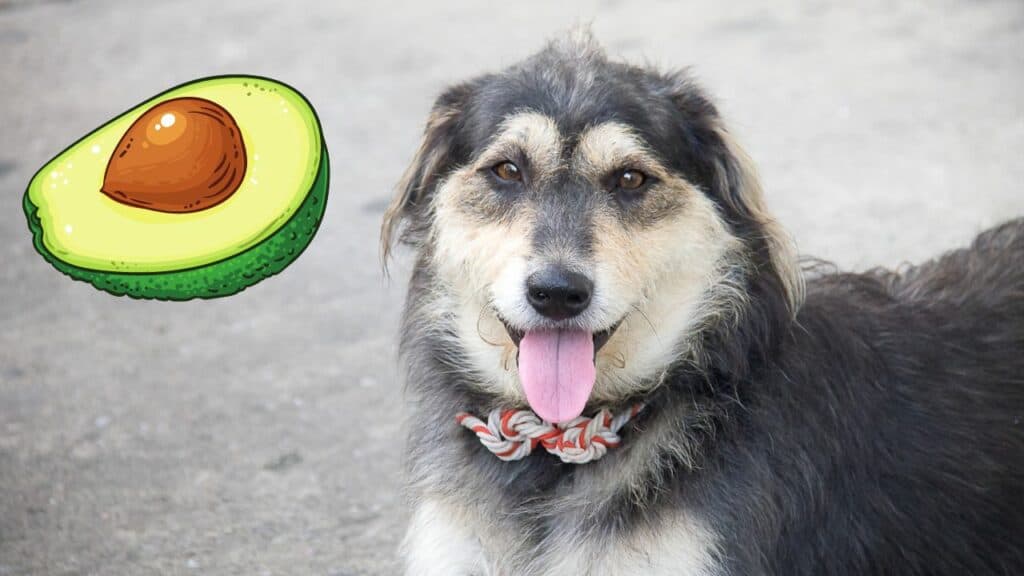
Pearson is a fungicide toxin found in avocados.
For humans, it is safe, but not for dogs.
You’re probably not considering giving your dog avocados because he might not even like them.
However, watch out that they never step on an avocado pit.
They might chew on them, and that can prove toxic for them.
The dog might have trouble breathing if fluid builds up in its chest, lungs, and other organs.
Bacon
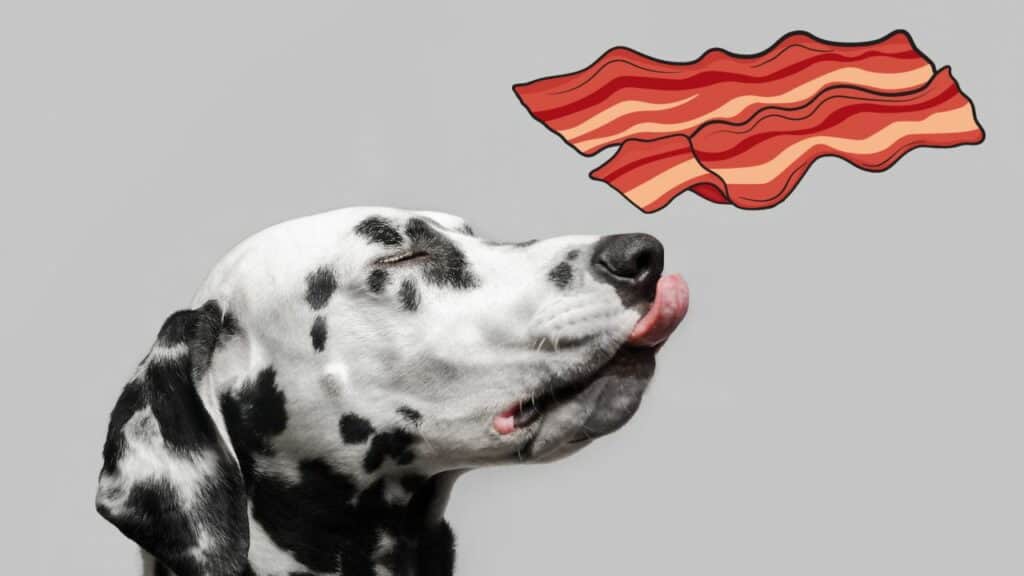
Every year, the average American eats 18 pounds of bacon.
However, the typical dog might suffer a great deal from that.
Bacon is high in fat and has too much salt, they would happily eat it right out of your hand.
Pancreatitis is the primary health risk connected to eating bacon and having dogs.
It is a condition brought on by pancreatic inflammation.
Pancreatitis requires severe veterinary care and is excruciatingly painful.
Diarrhea and vomiting are symptoms.
Therefore, avoid giving your pets bacon, grease, ham, or other fat-trimmed meat.
Even though they might not enjoy it, it will benefit them in the long run.
Caffeine, Coffee, Tea, Cocoa
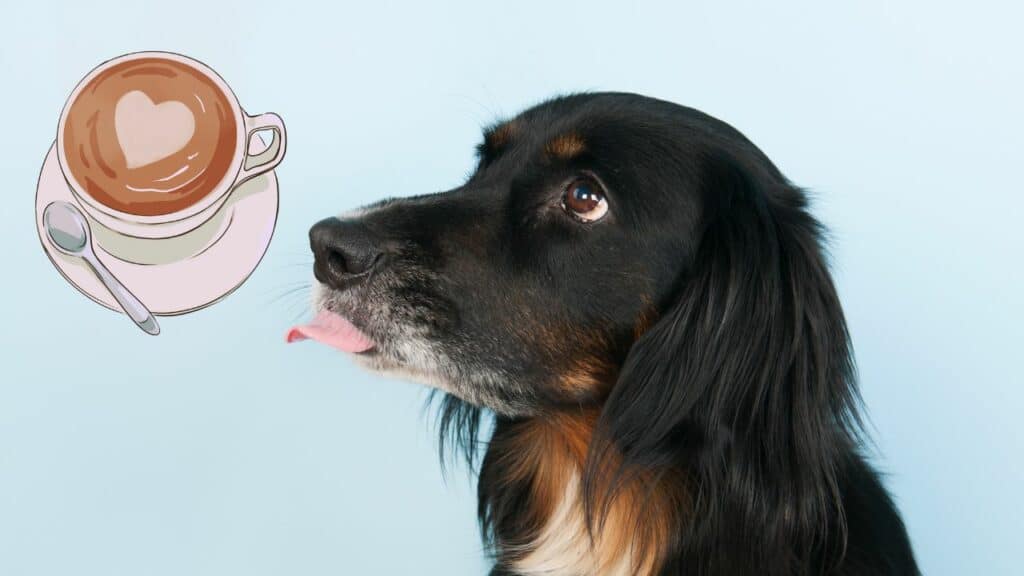
Some soft drinks are also prohibited.
They contain caffeine, which can drastically increase your dog’s heart rate in canines.
Lung failure and abnormal heart rhythm are two side effects of caffeine.
The main symptoms in dogs include unusual thirst, restlessness, lousy bladder control, vomiting, and diarrhea.
For dogs, caffeine is no joke.
It proved fatal in some instances.
They don’t require a lot of liquids, either.
Make sure you don’t leave any half-full coffee mugs around because a few sips of coffee or tea can cause death.
Related: What Can Dogs Drink Besides Water?
Cat Food
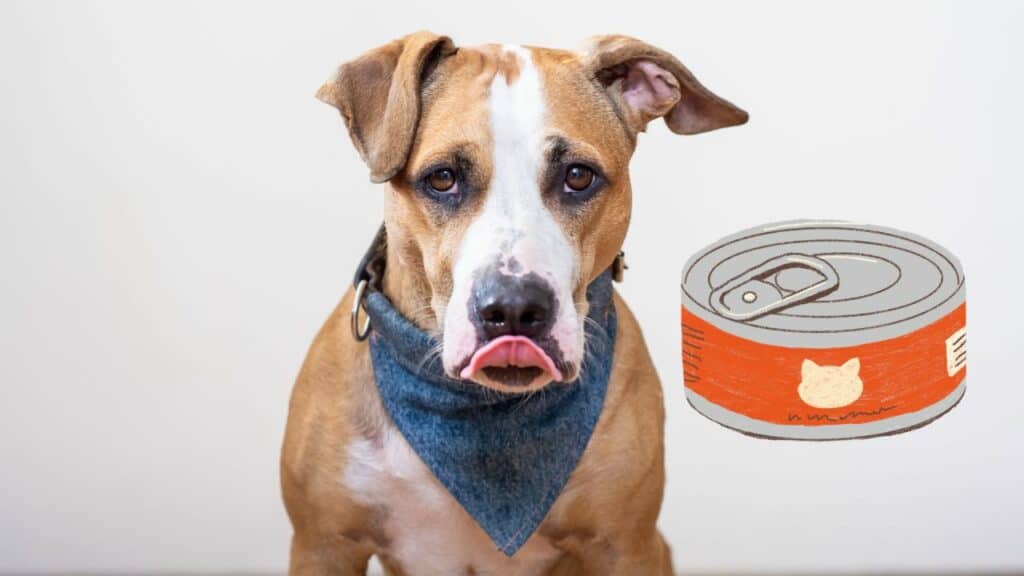
Although it may appear the same to us at this point, cat food and dog food are very different.
First off, the dietary requirements of dogs and cats are different.
You might be surprised to learn that cats are obligate carnivores.
They must eat meat to fulfill a biological need. In contrast, dogs are omnivores.
They can consume a wider variety of fruits, vegetables, and meats.
As a result, cat food has a higher meat content, is higher in fat, and contains less protein.
It may occasionally cause no harm to dogs.
On the other hand, over time, it might give your dog gastrointestinal problems, sickness, and diarrhea.
Chocolate
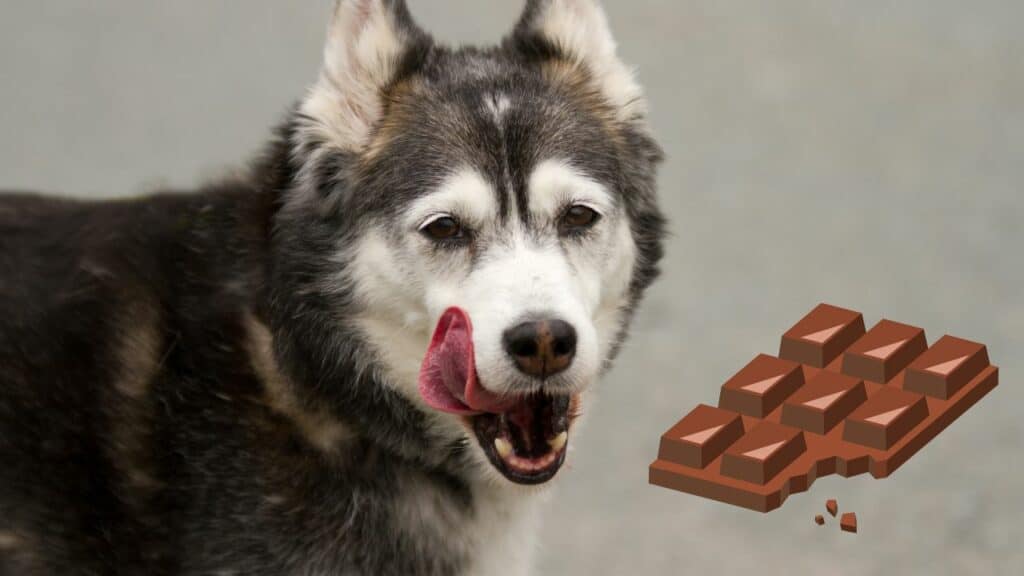
Your dog will come sniffing around whenever you open a bar of chocolate and give you those endearing puppy eyes.
They share our enthusiasm for it.
But chocolate can be fatal (all sorts of chocolate, also the dark chocolate).
It contains some chemicals that dogs can’t possibly digest.
Giving your dogs chocolate may result in vomiting, diarrhea, dehydration, internal bleeding, seizures, or even death.
Of course, how severe these side effects are will significantly depend on how much chocolate your dog consumes and his size and weight.
So try to control the urge to feed chocolate to your dogs.
Even though it tastes delicious, it’s terrible for them.
Citrus Oil
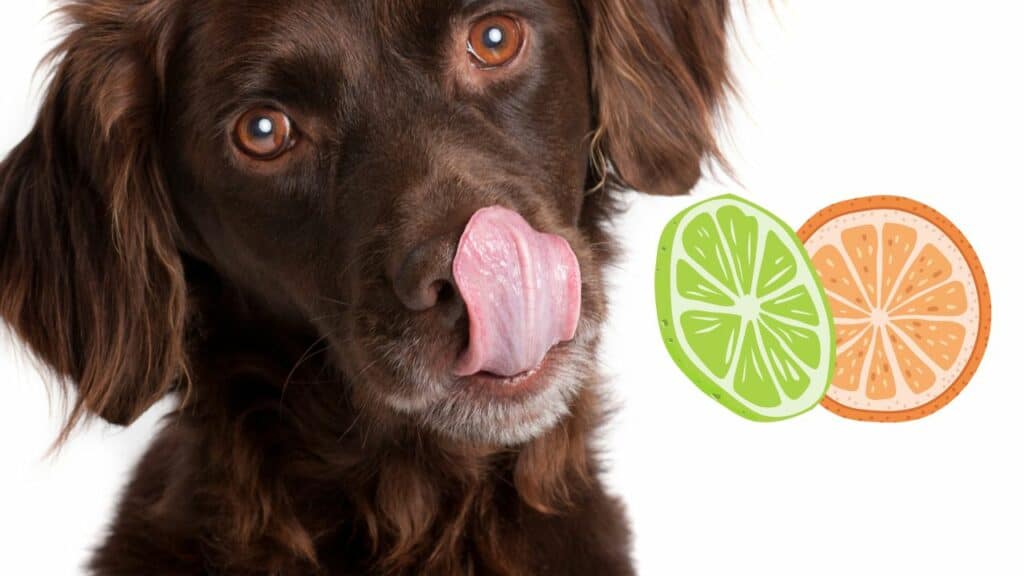
Does your dog come wagging his tail when he sniffs you eating oranges?
Does he like to lick the orange juice from your fingers?
It’s OK.
Nevertheless, cold-press citrus oil is not OK.
It can lead to liver failure – citrus oil is usually used for medicinal purposes.
It can also be found in many essential oils, so keep them away from those curious sniffing snouts.
Moreover, do not rub your dog’s skin with essential oil, as he might lick it off.
Cooked Bones
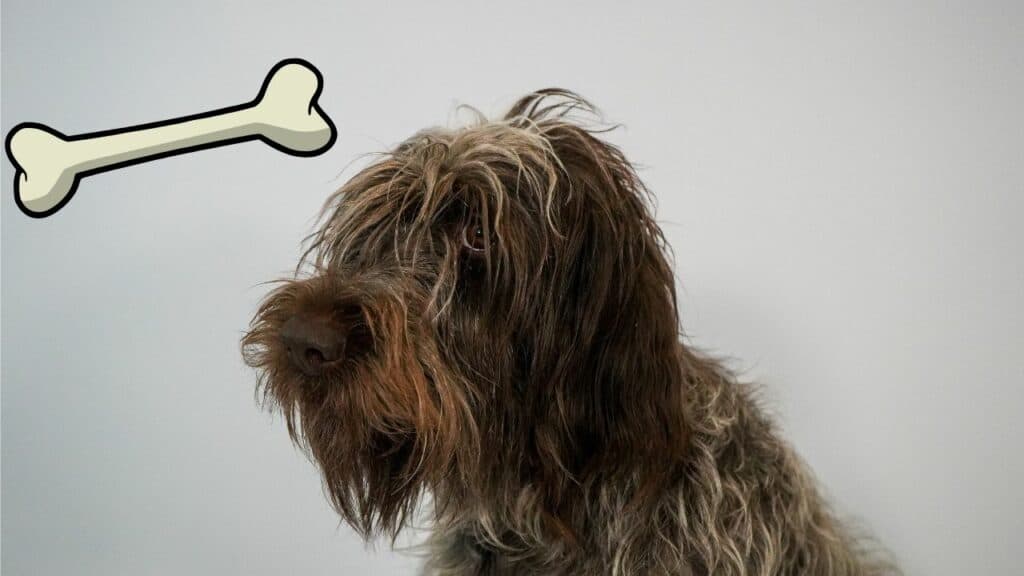
No bones at all!
Only the cooked bones you can see when they’re cooked are bad for your dog.
When your dog chews on them, they are more likely to splinter, which could, at the very least, hurt their mouth.
Cooked bones can occasionally lead to tissue and stomach inflammation and intestinal perforation.
So be cautious about bones.
Milk And Dairy Products
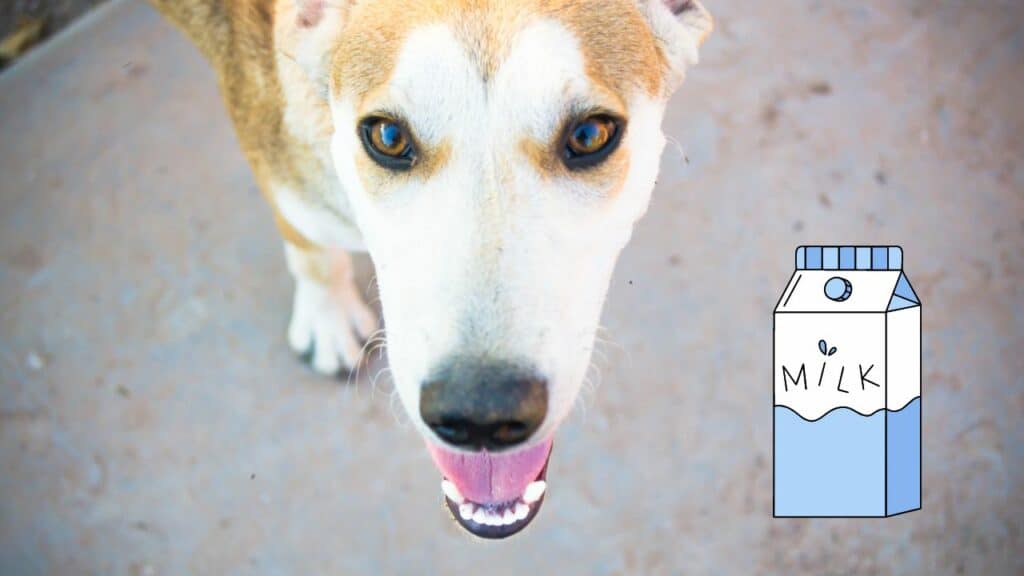
The majority of dogs are lactose intolerant.
Milk, cheese, and other dairy products can seriously upset a dogs stomach.
Although dairy products might not be fatal in small amounts, they can cause vomiting, diarrhea, and other gastrointestinal issues.
Mostly, dogs get problems with the dog’s digestive system.
Your dog might need to be hospitalized in some circumstances and if dogs drink milk in big amounts, it can be killing dogs.
Fat Trimmings
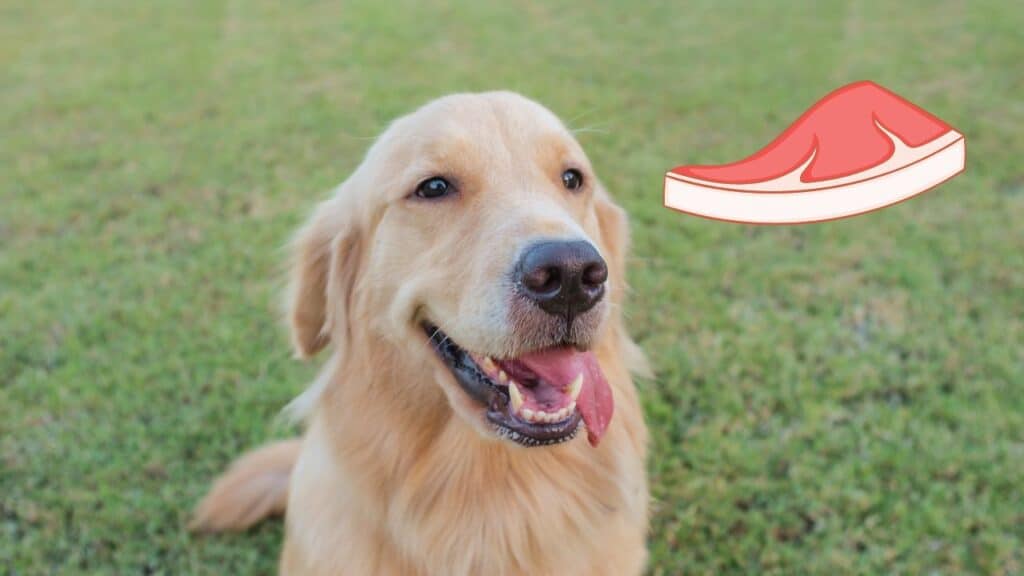
Don’t feed fat to your dog.
You removed the meat.
Even though they may adore it, it is terrible for them.
Your dog may experience vomiting, diarrhea, and even pancreatitis if they consume raw fat.
High-fat foods can occasionally cause blood infections in your canine companions.
So, if you don’t eat the meat’s rendered fat, don’t let your dog either.
Garlic
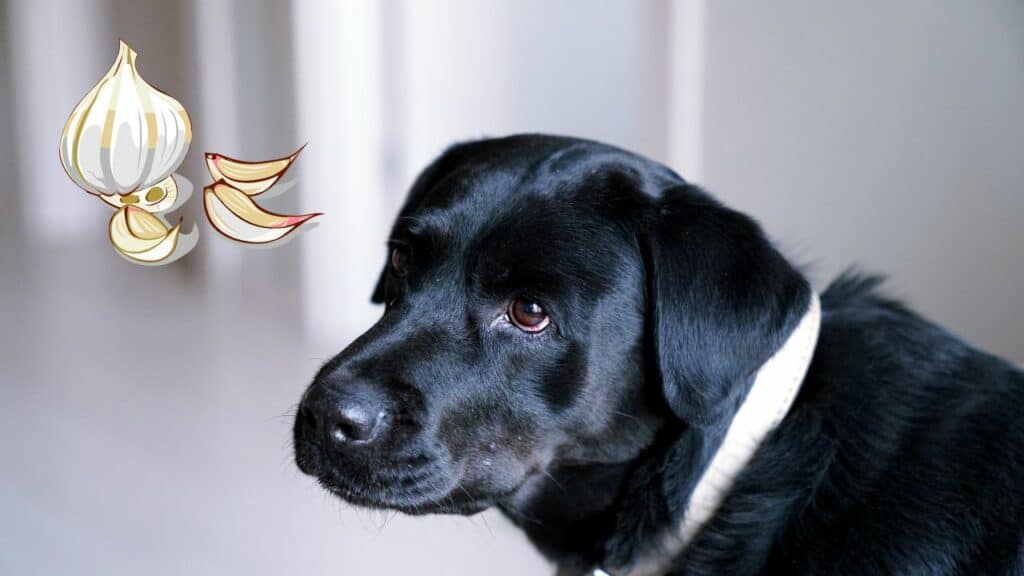
Because of a substance called sulfate, garlic is extremely toxic to dogs.
Because they cannot break down this substance, our furry friends’ blood cells burst because it accumulates in their bloodstream
Yes, you won’t give your dog garlic per se, but we frequently include garlic in our meals.
Therefore, think twice before feeding your dog a steak dipped in garlic sauce.
Grapes And Raisins
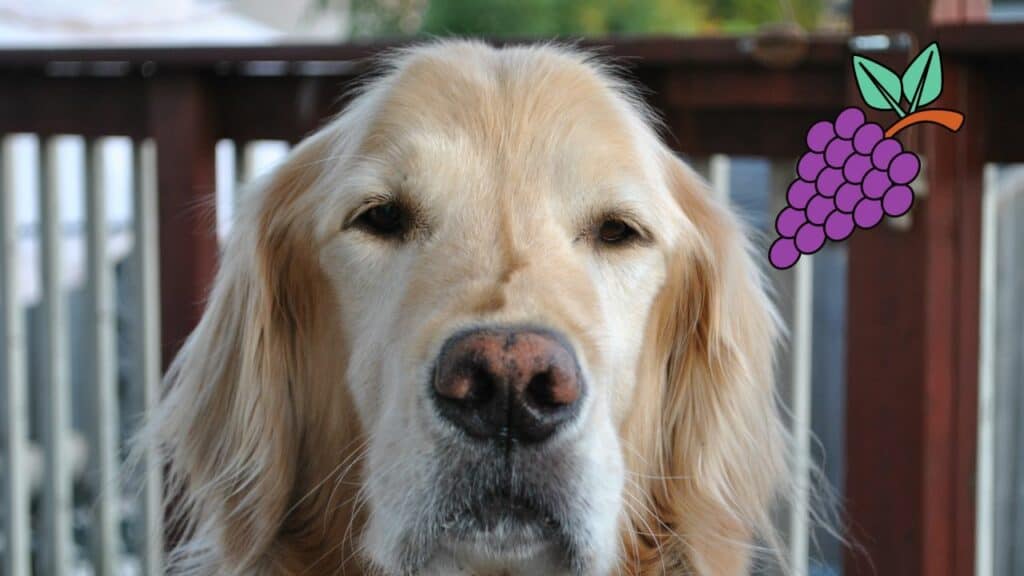
Both grapes and raisins can be harmful to dogs and make your dog sick.
Even more, eaten in bigger amounts, they are poisonous to dogs.
Even a few of these can cause kidney failure in your dog, requiring hospitalization.
The two most concerning symptoms are extreme thirst and little to no urination.
Therefore, do not give your dogs any raw grapes and raisins, or baked goods.
That is what love means at times.
Macadamia Nuts
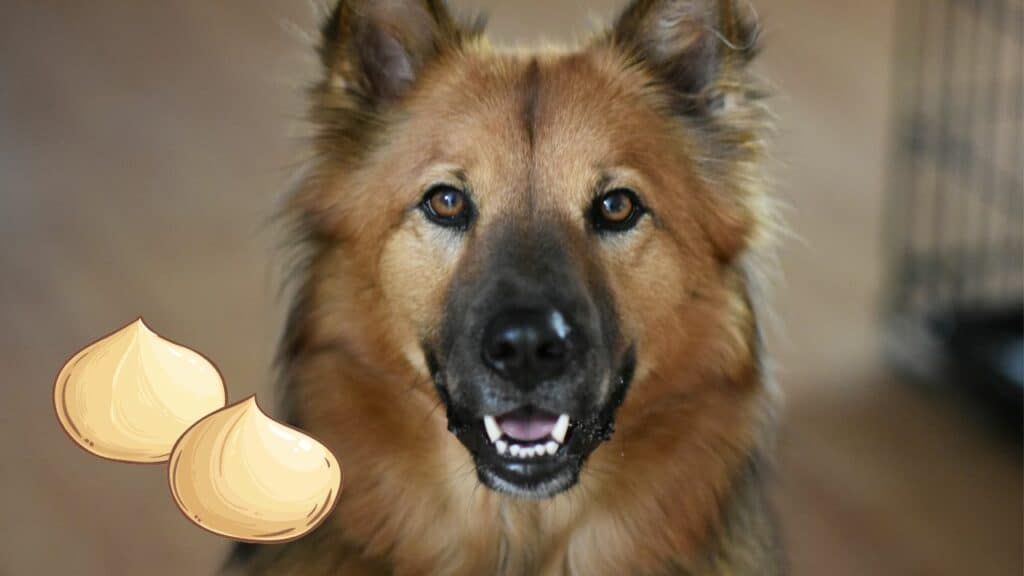
Macadamia nuts have a high-fat content.
They are very healthy for humans and are high in minerals, vitamins, fiber, and antioxidants.
Dogs’ metabolisms differ from ours, so eating macadamia nuts will aggravate their stomachs and result in nausea, diarrhea, extreme weakness, and even momentary paralysis.
So keep macadamia nuts out of the reach of their interests, sniffing little boobs before we move on to the next food.
Mushrooms
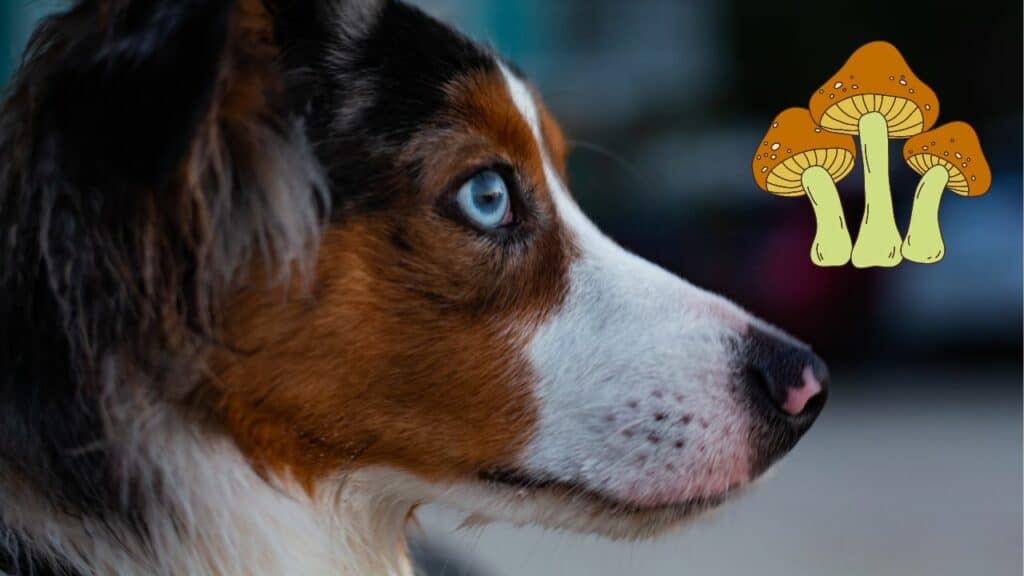
Various poisonous toxins are linked to multiple mushrooms, and mushrooms contain several toxins.
All of which may have an impact on different body parts of a dog.
They can bring on seizures, shock, and even death.
Mustard
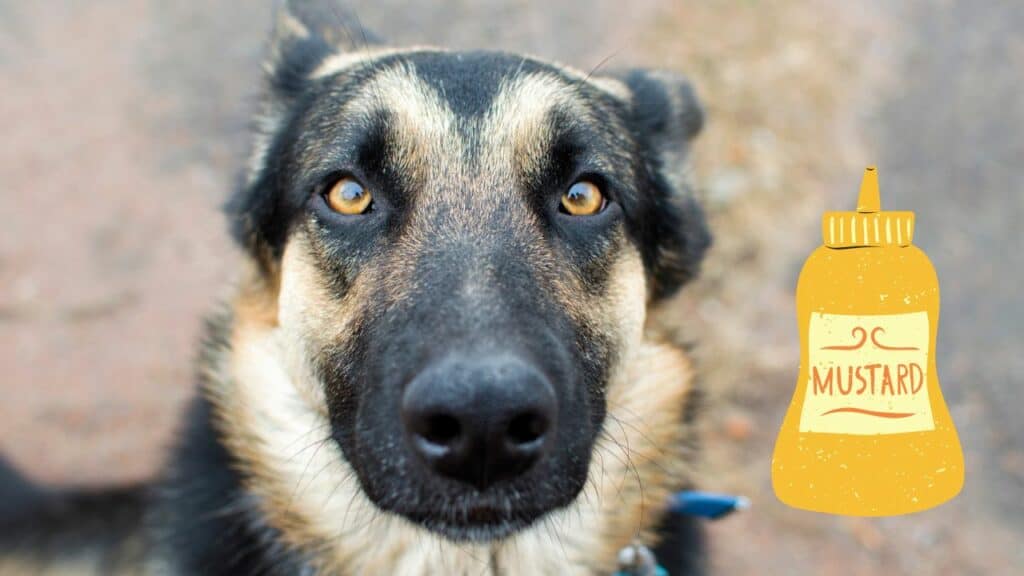
Small doses of mustard do not have fatal effects.
It’s dangerous for your furry little friends to eat mustard.
However, it can seriously upset a dog’s stomach. Some veterinarians use it to make dogs throw up.
Ensure you don’t give your dog meat with mustard on it because the same rule applies to mustard seeds.
Although his stomach won’t like it, he will still eat it.
Nutmeg
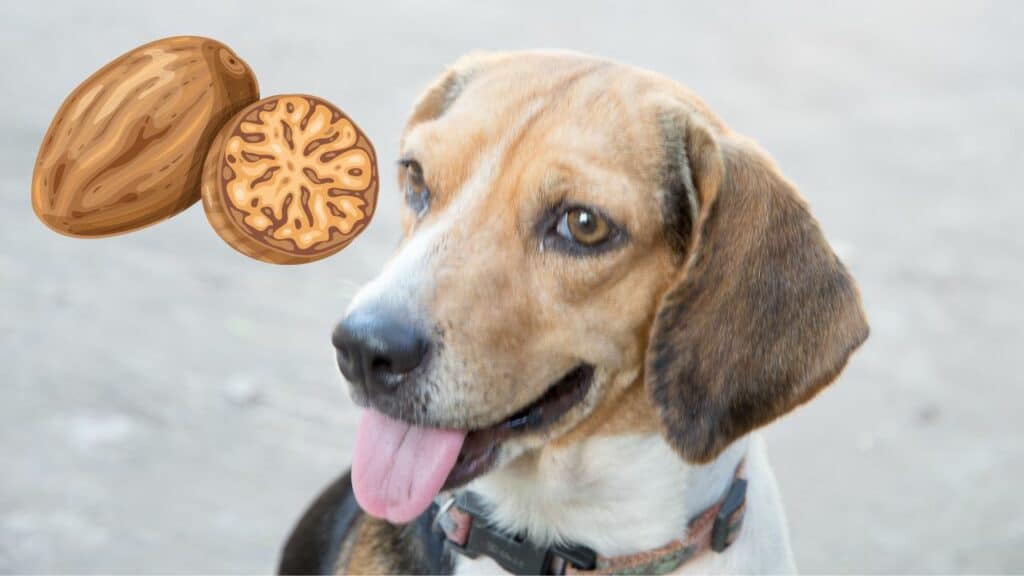
Nutmeg contains myosin, a naturally occurring compound that can cause hallucinations and seizures.
In dogs, baked goods with nutmeg will not pose a threat.
However, ensure your dog does not chew directly on the spice container or packets that could prove toxic.
Peaches
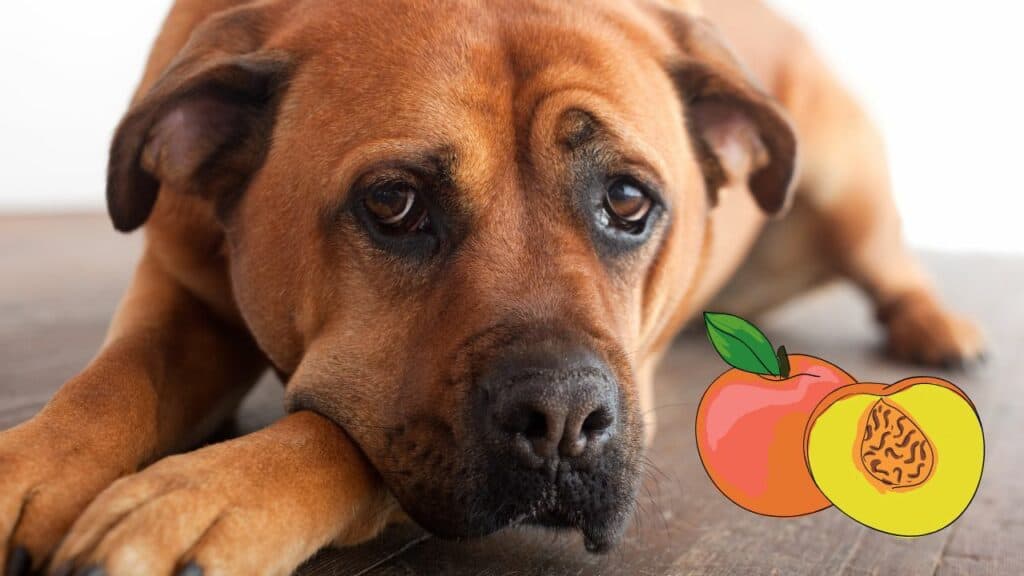
Peach flesh is OK.
But the fruit pits are dangerous – the pits of peaches contain amylin, a cyanogenic glucoside.
If your puppy chews on several peach pits, he will get in trouble as magdalene releases cyanide in the bloodstream.
Moreover, little pooches might even choke on peach pits, so make sure you always throw the holes in the trash.
Onions
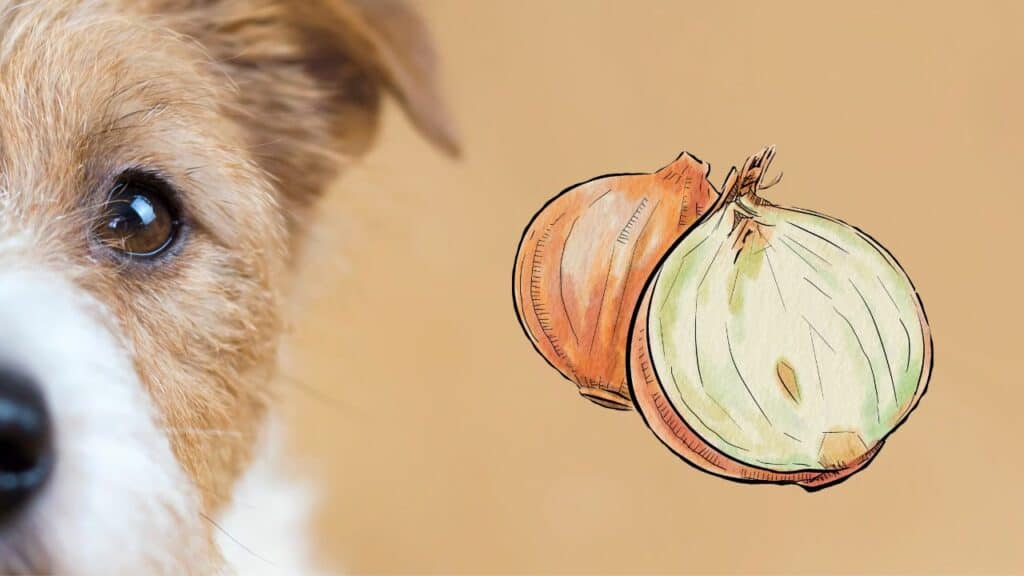
Onions are extremely toxic to dogs.
Severe anemia is caused by red blood cells.
The symptoms may not appear for several days, and your veterinarian may need to conduct several investigations before determining the cause.
So keep your dog away from leaks and onions.
Although they aren’t precisely dog treats, your pet may enjoy playing with and chewing on them.
Raw Eggs
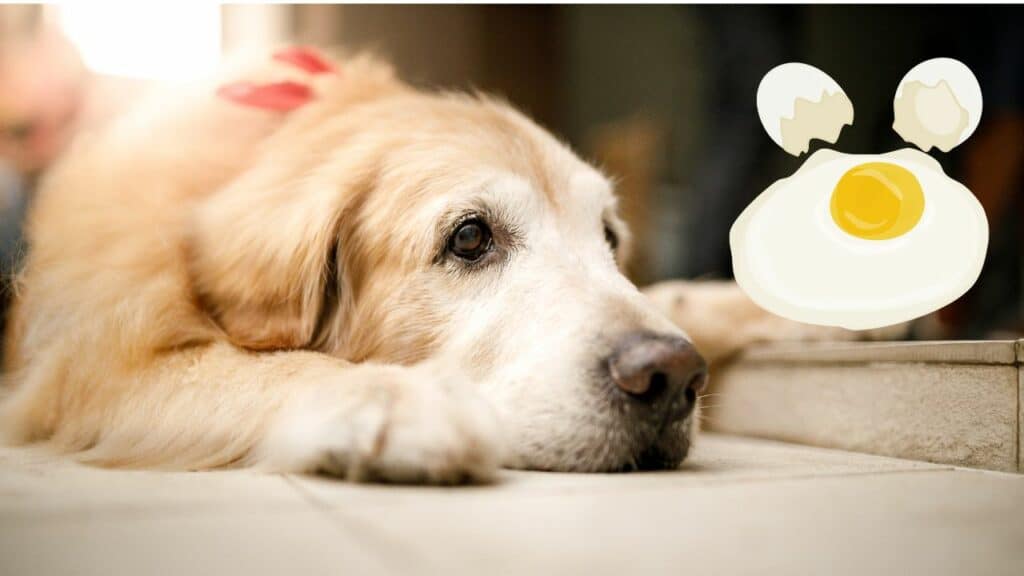
Undoubtedly, eggs are a great source of protein and, when prepared correctly, can help your dog’s coat and digestive system.
However, if you feed them raw eggs, that is one way they are not great.
It’s not even good; it’s downright toxic!
That is because eating raw eggs can cause a biotin deficiency.
An enzyme called “avidin” is found in eggs, limiting the absorption of biotin, one of the many B vitamins.
Although biotin deficiencies in dogs are uncommon, they are still a possibility.
If they develop a biotin deficiency, they risk creating a wrong coat, digestive issues, skin issues, and other issues.
Rhubarb
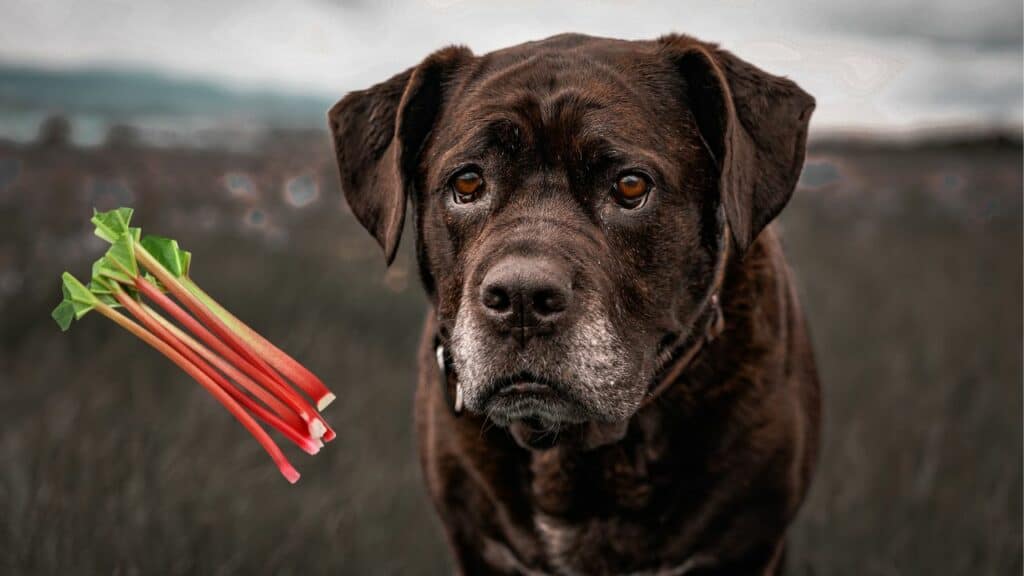
A perennial vegetable, rhubarb can be roasted, sautéed, stewed, or pureed.
You can also find it in ice cream, pancakes, and cocktails because it is so sweet.
Oxic acid, which is present in rhubarb, can result in kidney failure. It benefits humans but not canines.
The main warning signs in dogs are excessive drooling, vomiting, diarrhea, trembling, blood in the urine, or extreme thirst, so avoid ice cream and alcohol.
You can substitute a special dog treat for your furry little friend.
Salt
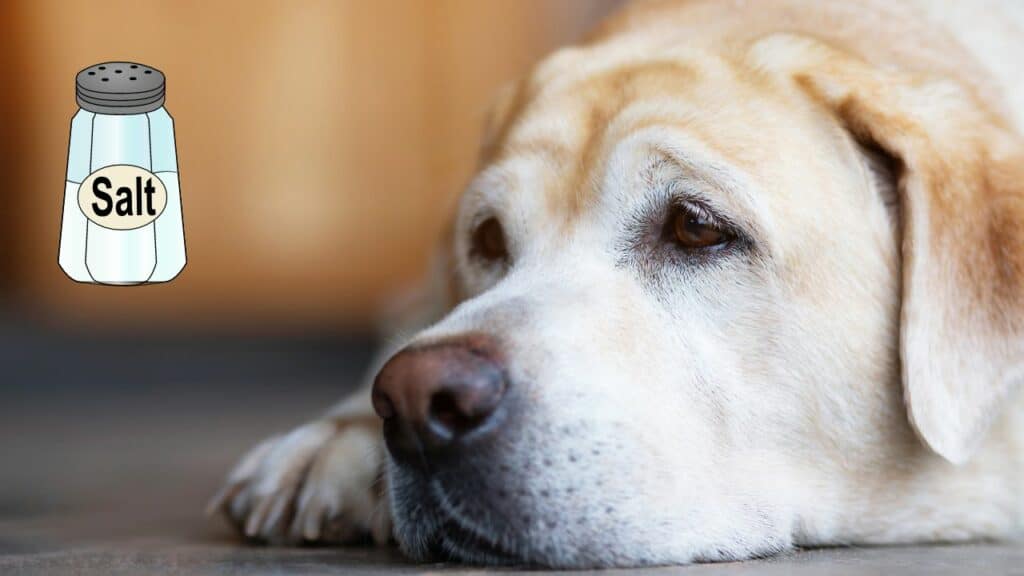
Did you know that too much salt and salt poisoning can cause death in dogs?
According to experts, four grams of salt per kilogram of body weight, or 2.2 teaspoons of salt per pound, can be fatal.
The primary signs in dogs are depression, tremors, drooling, vomiting, fever, excessive thirst and even seizures.
Try to keep your dog away the next time you open a bag of chips or pretzels.
Don’t feed any salty foods and salted foods to your four-legged friend.
Spinach

Veterinarians and other dog experts disagree passionately about spinach.
It has a high concentration of oxalic acid, which hinders dogs’ ability to absorb calcium and harms their kidneys.
Like many other foods on this list, how much is consumed has a significant impact on how toxic a food is.
A small amount of spinach now and then is probably fine for your dog, but regular consumption can have serious adverse effects on their health.
Tobacco

Alright, so you wouldn’t knowingly give your dog tobacco.
Although they typically dislike tobacco, dogs can become poisoned by nicotine.
Your curious dog may chew on your cigarettes if you smoke and keep them all over the house.
Dogs enjoy chewing on various household items at random. It might be a vial of liquid nicotine.
Using nicotine-containing chewing tobacco or even nicotine patches or cigars.
Your dog may experience severe consequences from unintentional nicotine poisoning.
An unease in the stomach and restlessness are the initial warning signs.
Additional symptoms of nicotine poisoning include an irregular heartbeat, convulsions, diarrhea, dilated pupils, drooling, lack of coordination, and even paralysis or tremors.
The chances of your dog recovering are good if he receives the proper diagnosis and care within the next three to four hours of ingesting tobacco.
Xylitol
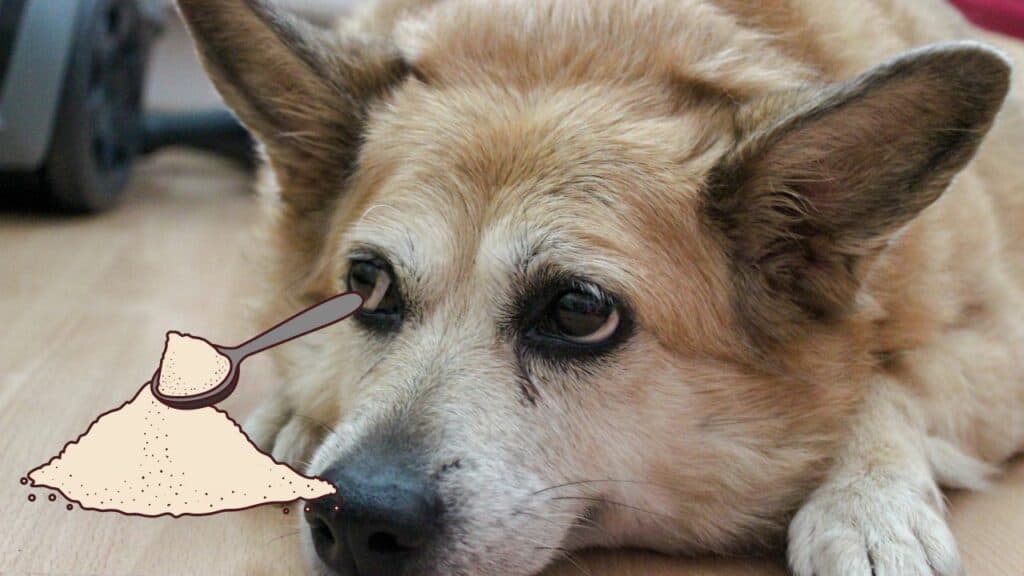
Natural sources of xylitol include raspberries, strawberries, cauliflower, and mushrooms.
Additionally, it is used to sweeten toothpaste, candy, chewing gum, and some baked goods.
Although this sugar alcohol can cause liver damage and a sudden drop in blood sugar levels in humans, it can be fatal to dogs.
Weakness, nausea, stiffness, and seizures are the main side effects of dog’s blood sugar in imbalance.
So keep your adorable dog away from products like toothpaste, gum, and other foods like baked goods that contain xylitol.
Yeast (Including Raw Dough)
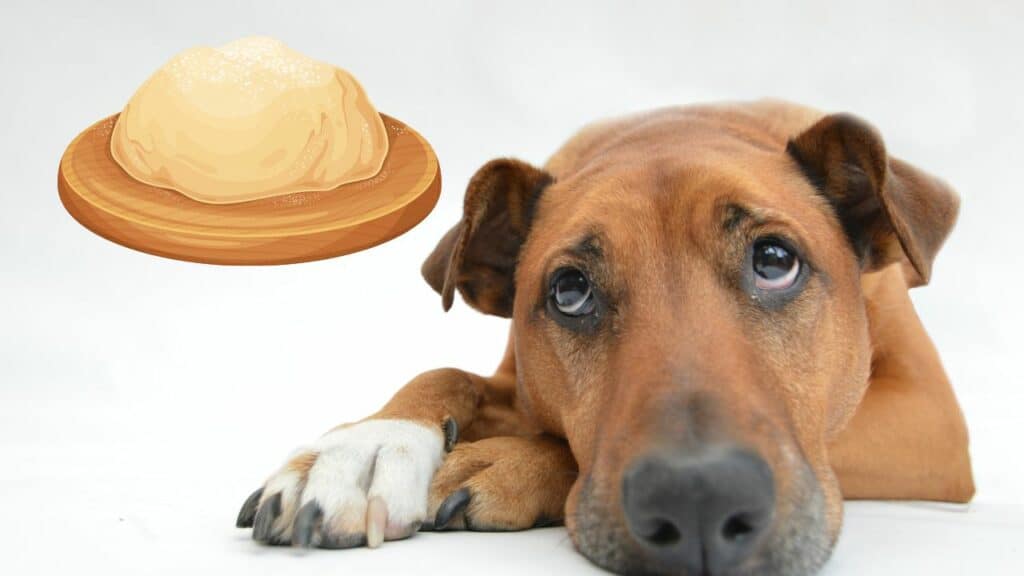
Keep your dogs away from the raw yeast dough for your bread because it can poison them with alcohol.
The yeast will cause their intestines to twist as it ferments, enters their bloodstream, and produces ethanol.
Bloating, excruciating pain and discomfort are the main adverse effects.
Your little friend might not die, depending on the amount, but it will undoubtedly hurt and be unpleasant.
So, to save him, keep the yeast and uncooked yeast dough way from their adorably curious snouts.
My Dog Ate One Of These Foods – What Should I Do?
Keeping these foods out of reach of your dog is the best way to ensure they don’t eat anything harmful.
Don’t leave those foods on counters or tables, purses, or anywhere else your dog could get to them to reduce the risk.
Remember that the concentrations of these toxic substances vary between products.
Because the amount of chocolate in a Snickers bar and a Ghirardelli bar differs, the toxic doses of these two bars would also differ.
If you believe your dog has eaten something poisonous, call the ASPCA animal poison control hotline or your veterinarian immediately.
Even if your dog just ate a little of the foods mentioned, it’s best to get medical advice.
The type of food your dog was exposed to and its symptoms will affect the course of treatment.
Never administer treatment or medication to a dog without the guidance of a qualified veterinarian.

